This is where art dances with grace, where ornate elegance meets playful whimsy – welcome to the Rococo art movement. Rococo, derived from the French word “rocaille,” meaning shell or rock work, is a style that swept through Europe in the 18th century. This enchanting period is all about opulence, intricate details, and a celebration of life’s pleasures.
In this article, we’ll delve into the essence of Rococo, unravelling its distinctive characteristics and the artists who brought it to life. From its origins in France to its influence across the continent, you’ll journey through an artistic genre of pastel palettes, intricate motifs, gold detailing and a spirit that cherishes extravagance.
What type of art was created during the Rococo movement?
During the Rococo movement paintings, architecture, ornaments and decor were commonly made.
Rococo art was created and popular during which years?
The Rococo art movement was popular roughly from 1723 to 1759.
Where was Rococo art made and popularised?
While the Rococo art movement started in France, it eventually spread across Europe.
What medium (media) and tools were used to make Rococo Art?
Paintings, wooden furniture, pottery and aristocratic decor with ornamental gold or metal embellishments were famously made in the Rococo art movement.
Who are some famous Rococo artists and artworks?
The Blue Boy by Thomas Gainsborough

An Allegory with Venus and Time by Giovanni Battista Tiepolo
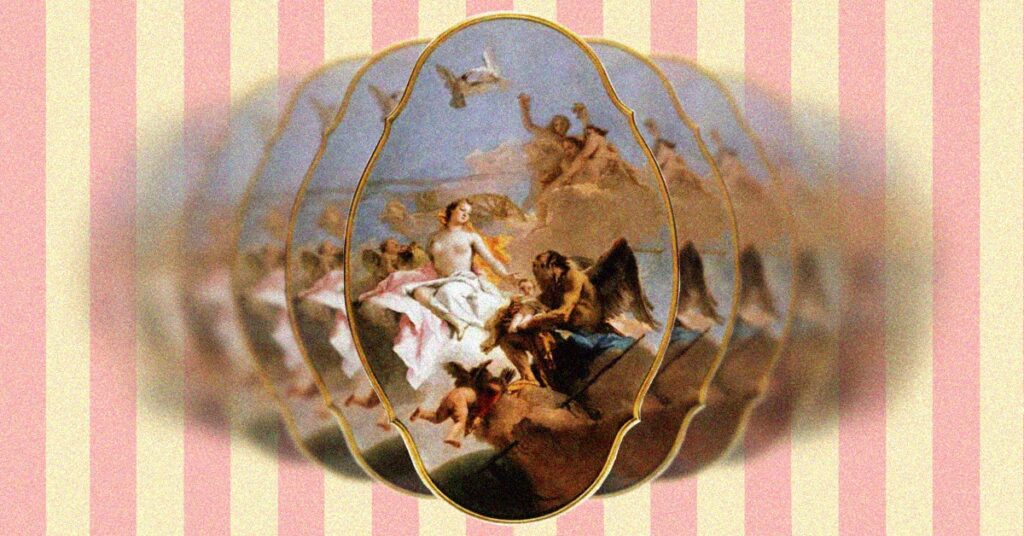
Chest of Drawers by Jean-Mathieu Chevallier
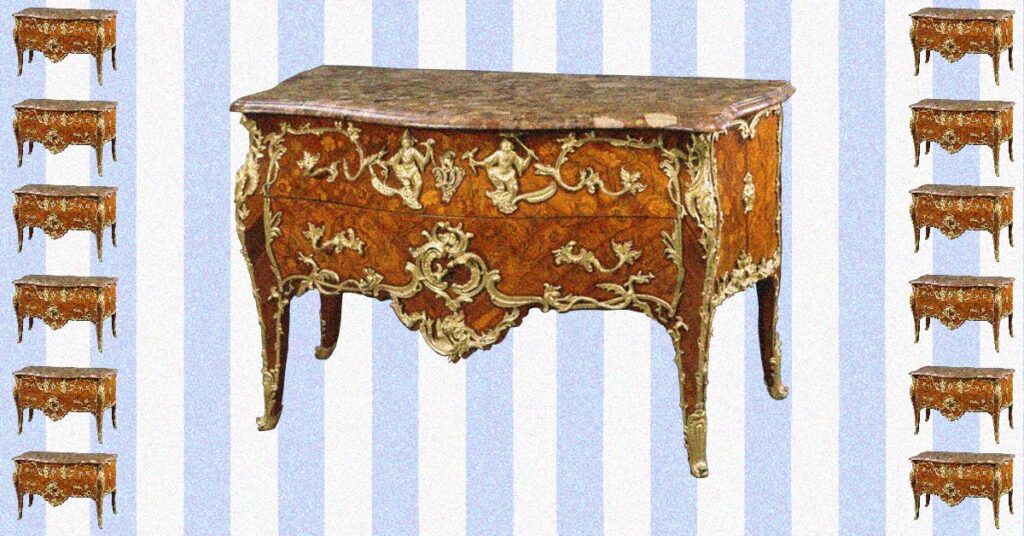
Which art movement(s) came before the Rococo movement?
The Baroque art movement was at the same time as Rococo. Baroque had seriousness in its subjects as opposed to the cheerful and light-natured themes and subjects of Rococo.
Which art movement(s) came after the Rococo movement?
The Realism art movement came after the Rococo movement.
Top 7 Artworks of the Rococo Art Movement
Jean-Honoré Fragonard’s “The Swing” (1767)
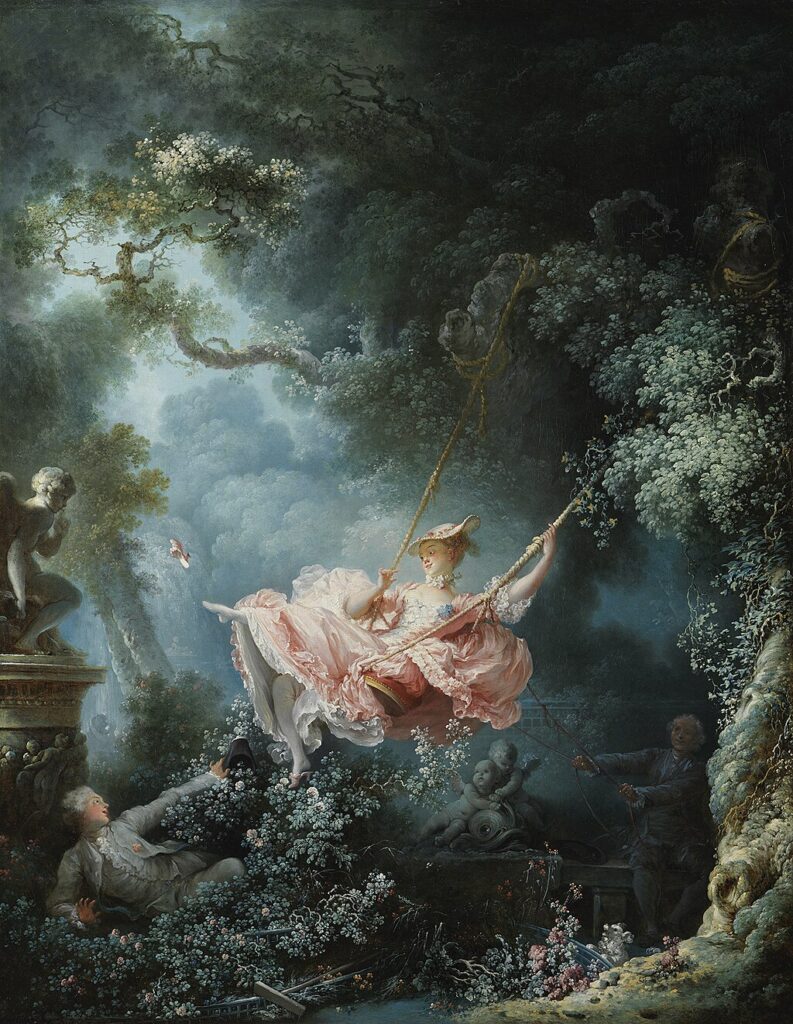
One of the most celebrated Rococo paintings, “The Swing” by Fragonard, is a masterpiece of playful elegance. The artwork portrays a young lady on a swing, kicking her shoe off in mid-air, while her suitor hides below. It captures the excitement of secret encounters and embodies the Rococo spirit with its pastel colours and light-hearted theme.
Antoine Watteau’s “The Embarkation for Cythera” (1717)
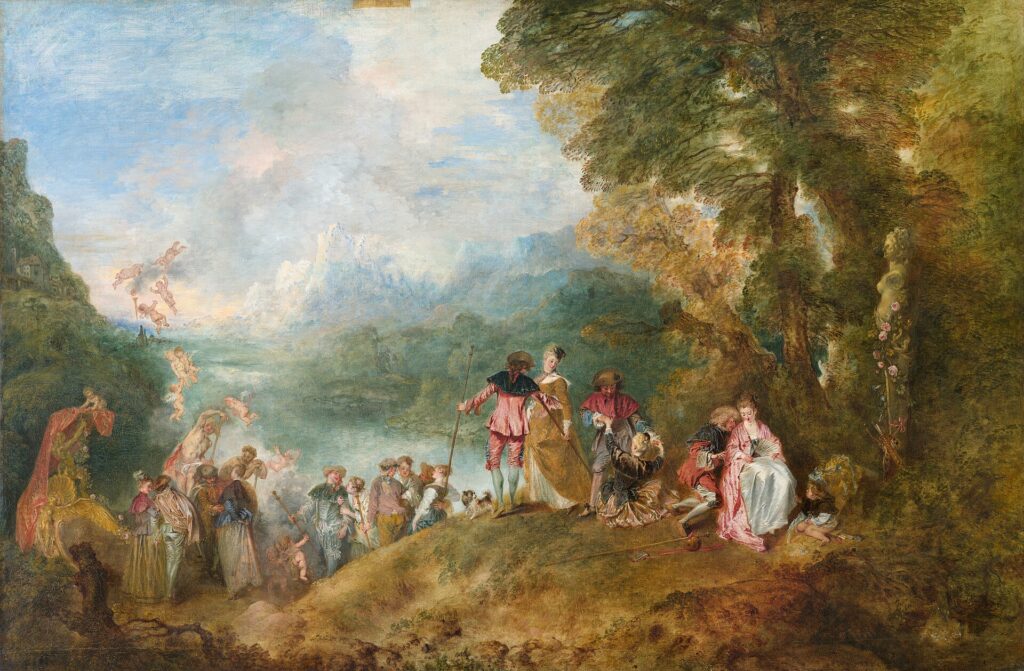
Watteau’s masterpiece is often regarded as the beginning of the Rococo movement. It features elegantly dressed couples on a voyage to the island of love, Cythera. The painting is a delicate portrayal of romance, with its intricate costumes and a sense of anticipation, setting the stage for Rococo’s love of refined pleasures.
Jean-Antoine Watteau’s “Pierrot” (1718)

Watteau’s “Pierrot” is a fine example of his talent in capturing the Rococo’s gentle melancholy. The painting depicts Pierrot, a stock character in the commedia dell’arte, in a contemplative moment. The soft, dreamy quality of the artwork exemplifies Rococo’s fondness for portraying dreamy and dramatic emotions.
Jean-Baptiste-Siméon Chardin’s “The Morning Toilette” (1741)
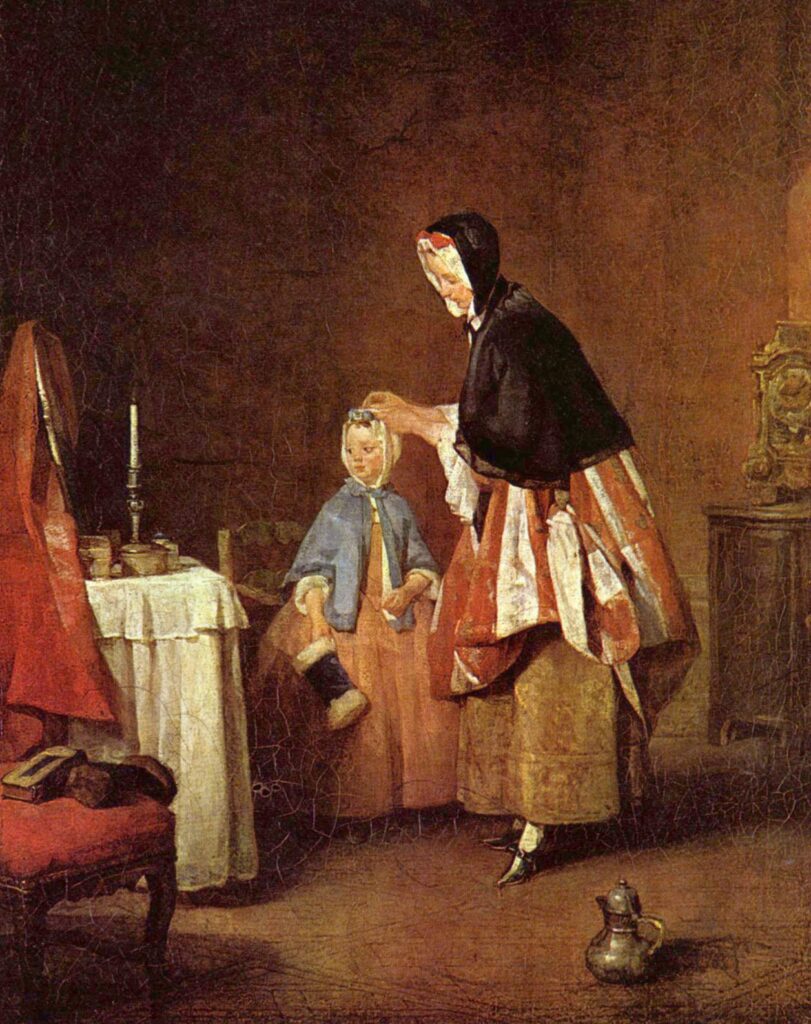
While Rococo is often associated with opulence, Chardin’s “The Morning Toilette” offers a glimpse into the quieter, everyday moments of the era. The painting portrays a woman carefully arranging her toilette, capturing the grace in simple, daily activities.
Carl Gustaf Pilo’s “Pehr Hörberg” (c. 1755)

Pehr Hörberg is a lesser-known Rococo artist, but his portrait by Carl Gustaf Pilo is a remarkable piece. It showcases Hörberg in a powdered wig and elegant attire, embodying the fashion and styles of the Rococo period.
Élisabeth Louise Vigée Le Brun’s “Self-Portrait in a Straw Hat” (c. 1782)
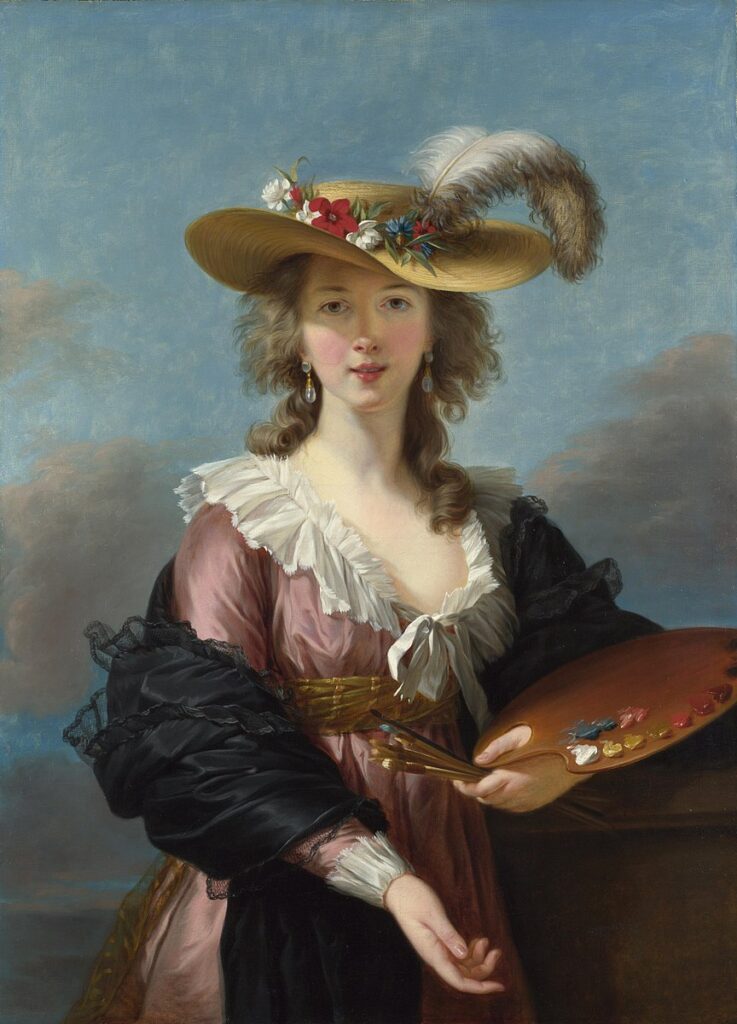
Vigée Le Brun was a prominent female artist in the Rococo period. Her self-portrait is a testament to her skill and Rococo’s appreciation for portraiture. She depicts herself in a straw hat, showcasing a sense of relaxed elegance.
Nicolas Lancret’s “The Four Times of Day: Morning, Midday, Evening, Night” (1739)
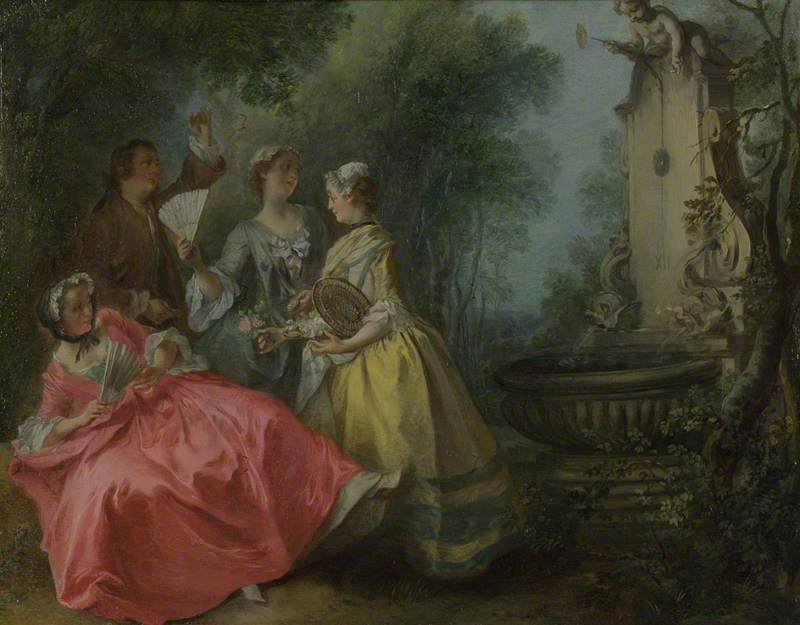
Lancret’s series of paintings capture scenes of daily life throughout the day, infused with a sense of humour and charm. Each painting portrays a different time of day and the corresponding activities, offering a delightful snapshot of Rococo life.
These Rococo artworks collectively reflect the spirit of the era, where beauty, sensuality, and the celebration of life’s pleasures took centre stage. Each piece is a testament to the talent of the artists and their ability to capture the essence of this enchanting period in history.
*Images from Wiki Commons






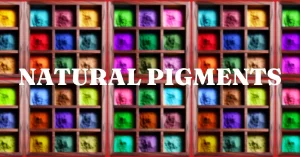
0 Comments